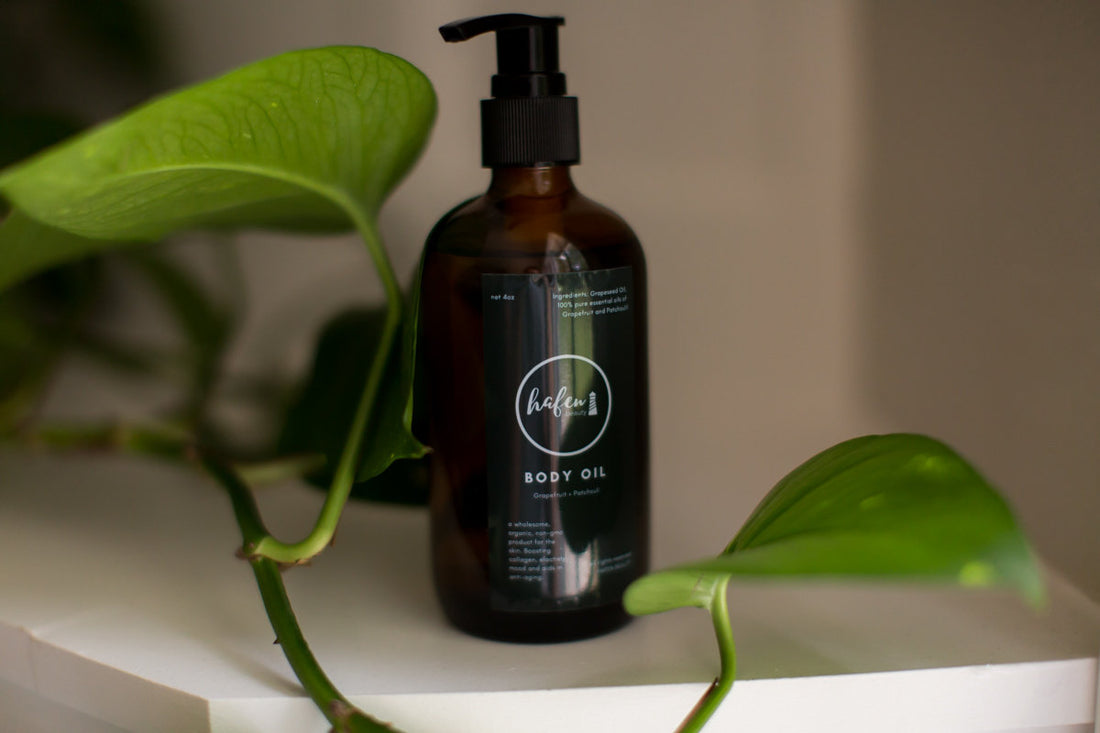
If you’ve googled how do I protect my skin from aging a long list of anti-aging creams and moisturizers with high amounts of Sun Protection Factor (SPF) will flood your feed. With the constant worry of climate control and the planet feeling warmer every year, it’s easy to believe our skin is aging because of the most prominent star in the universe. The articles are not wrong.
Free radicals accelerate aging from toxins in the environment, harmful blue light, prolonged exposure to the sun, skincare products, and more. Protecting our skin is vital for our health and confidence, but we should look at all the ingredients before grabbing that SPF as the sole protector of our skin. It is always important to know what we are putting on our skin and how it affects our short-term and long-term health, no matter the claims on the labels.
Sunscreens today are formulated to protect the skin from UV rays and excess sun exposure. However, there are strong concerns over the ingredients used in sunscreen to make it effective. Studies can find skincare products in the bloodstream minutes after they are applied. What we think is protecting us from harmful rays can be detrimental to our internal organs, causing skin irritation, hormone disruption, allergies, and other concerns.
Companies are not required to label their products toxic vs. non-toxic. Unfortunately, consumers must research themselves to determine what product they deem safe for absorption through their skin.
The EWG has noted that oxybenzone, octinoxate, octisalate, octocrylene, homosalate, and avobenzone are all absorbed into the body after just one use. Research has proved these ingredients can be found in the bloodstream long after being applied and are hazardous to our health. Studies have shown ingredients in sunscreen can be detected in breastmilk and urine samples. It’s worthy to note sunscreen can be ingested if inhaled, or applied to the lips, making the lungs and digestive system susceptible to harm.
In the US, sunscreen is an over-the-counter drug. In other countries, sunscreen is cosmetic, supporting it, but not seen as sole protection from the sun. The EWG has on their website a friendly reminder you should not rely on sunscreen alone! Before going into the sun, wear clothes, plan around the sun, don’t get burned, wear sunglasses, find shade, and bring shade.
The FDA proposes of the 16 approved active ingredients in sunscreen, there are only two considered Generally Recognized as Safe and Effective (GRASE). The FDA has not regulated these ingredients since they were introduced and stated, Since the initial evaluation of these products, we know much more about the effects of the sun and about sunscreen’s absorption through the skin. The FDA is now doing more research to regulate these harmful ingredients in sunscreen products and bring them up to date with the current science.
Sunscreen can be a challenge to preserve because of its unique compounds. Most sunscreens are formulated with an organic phase and water ratio, including an SPF ratio, to make them UV protectant. This formula must have preservatives to keep the product shelf-stable, absorbable, and emulsified. Most chemical sunscreen formulations will include more than one sunscreen ingredient to improve the sunscreen spectrum and help stabilize its effectiveness. Most sunscreens, after a few hours in the sun, are entirely useless, thus the reason you must reapply every couple of hours. The formulations of these sunscreens have one goal in mind, not to let your skin burn, but they do not have our optimal health in mind.
WHAT TYPES OF UV RAYS ARE THERE?
UVA - longer wavelengths that are not all absorbed by the ozone layer and penetrate deeply into the skin
UVB - shorter wavelengths, absorbed by the ozone layer and penetrates superficial layers of the epidermis
UVC - shorter wavelengths absorbed by the ozone layer and do not affect the skin.
A broad-Spectrum sunscreen will protect you from UVA and UVB rays. Most broad-spectrum active ingredients are Zinc Oxide and Titanium Oxide, which are ingredients recognized as safe for the skin.
Active Sunscreen Ingredients to Avoid
Watch out for these ingredients as they are not GRASE and can cause skin irritation, hormone disruption, and allergies.
Avobenzone- allergic reactions, endocrine disruption, block the effects of testosterone
Cinoxate- preservative, stabilizer
Dioxybenzone, endocrine disruptor
Ensulizole - skin irritation,
Homosalate- endocrine disruptor
Meradimate - endocrine disruptor
Padimate O - breaks down into a chemical that increases the likelihood of cancer.
Oxybenzone(benzophenone-3) - allergic skin reactions, endocrine disruptor, more significant harm to children
Octinoxate (Octyl methoxycinnamate) - hormone effects on the metabolic system and affects thyroid hormone production (Seidlova-Wuttke 2006), with some evidence for other endocrine targets, including androgen and progesterone signaling
Octisalate - penetrates the skin, disrupts hormones, and produces toxic breakdown byproducts over time.
Octocrylene -allergic contact dermatitis, aquatic toxicity, endocrine-disrupting
Sulisobenzone - skin irritation, endocrine disruption
Active Sunscreen Ingredients to Accept:
Zinc oxide - UVA and UVB protectant, antiseptic, antibacterial
WHAT PLANTS HAVE NATURALLY OCCURRING SPF?
As the sun provides energy for plants, they, in turn, create an SPF oil to protect themselves from the sun. As the FDA states and EWG confirms, sunscreen should not be the only form of protection you use against the sun. Wearing clothes, planning around the sun, finding shade, etc., is all-important. Incorporating plant-based SPF is another way to add to your sun protection while infusing your skin with essential vitamins.
Naturally occurring SPF in plants to support sun protection
Keep these oils on hand to include in your skincare and to support your skin after sun exposure.
Carrot Oil
Cupuacu seed butter
Grape Seed Oil
WE RECOMMEND GRAPESEED BODY OIL OR WHIPPED BALM
Hemp seed oil
Jojoba oil
Olive oil
Red raspberry seed oil
Rice bran oil
Shea butter
Tamanu Oil
We recommend HAFEN BEAUTY ORGANIC TAMANU



